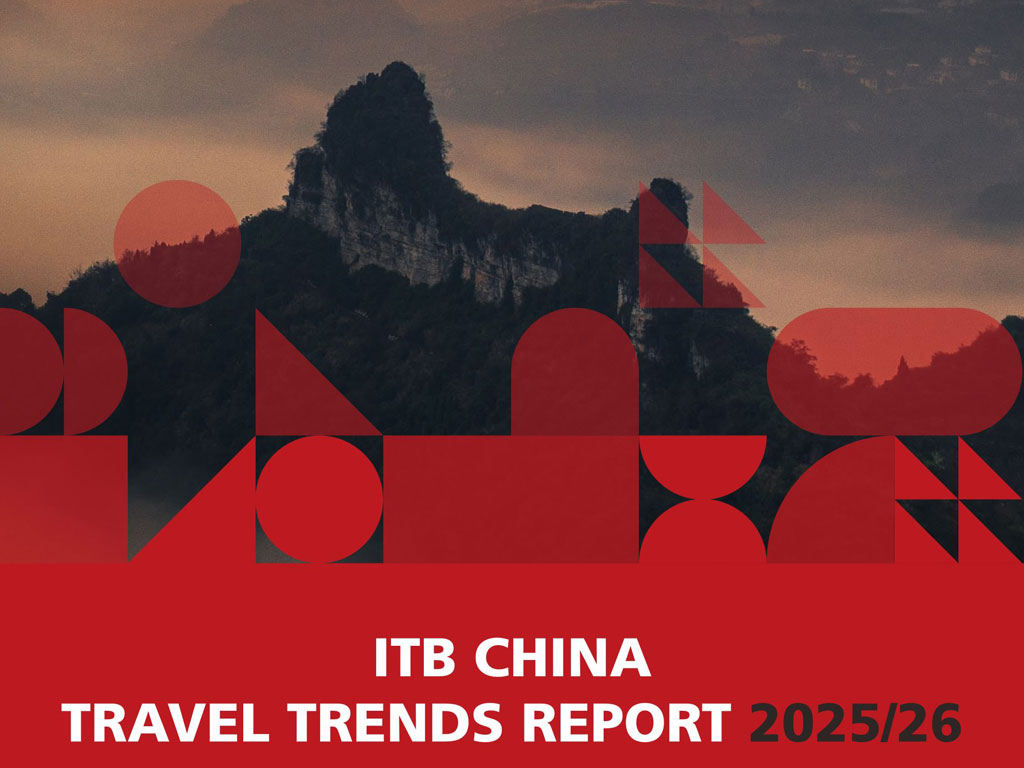The definition of China’s “core outbound segment” appears to be shifting with young, tech-savvy adventurers and experience-seeking senior travellers expected to define two divergent paths in outbound travel, says the ITB China Travel Trends Report 2025/26.
This change raises the question of how travel brands would need to adapt their products, services, accessibility, and marketing language to effectively serve both ends of this widening demographic spectrum, the report notes.
ITB China Travel Trends Report 2025/26 has been officially released by ITB China in partnership with two leading data authorities - Tourism Economics and Trip.com Group.
The report examines structural shifts and evolving trends across three core areas of the China-related travel ecosystem: outbound travel, meetings, incentives & events (MICE), and inbound travel to China. Combining robust data insights with expert industry commentary, the report maps the next phase of growth and opportunity emerging across the Chinese travel landscape.
Drawing on a quantitative survey of 1,400 ITB China Buyer Circle members, and in-depth interviews with senior industry stakeholders, the report provides a thorough analysis of the future of travel in China, helping global travel professionals adapt to a rapidly changing market.
Lydia Li, Deputy General Manager of Messe Berlin China, said: “With this annual trends report, we aim to provide actionable insights for global partners and industry professionals interested in the Chinese travel market. Our goal is to help them better understand Chinese travel demand and industry dynamics, identify opportunities, stay in step with market shifts, and make informed business decisions.”
Two core segments are expanding
Trip.com Group data show that travellers born in the 1980s and 1990s accounted for 67% of China’s outbound segment in 2024, and their influence is expected to deepen. But another powerful wave is emerging: by the end of 2025, more than 100 million “active seniors” are expected to participate in travel, with the senior travel market projected to exceed RMB 1 trillion ($140 billion).
Will young digital explorers and high-potential senior travellers create two distinctly different outbound maps? How should travel brands adapt product design, service packaging, accessibility, and marketing language to serve both ends of this widening demographic barbell? These are questions the report poses.
High Spend + Strong Preference
Chinese travellers are moving beyond “checklist sightseeing” toward emotionally resonant, lifestyle-driven, and culturally grounded travel. According to the ITB China Buyer Survey, 82% of respondents already offer customised destination programmes. Yet, structured group formats remain relevant: 48% of Chinese travel agents still sell seat-in or small-group destination tours.
When the desire for freedom meets real-world constraints — such as time, language, visas, and cost — identifying the inflection point becomes crucial. The innovation of the hybrid model that ultimately succeeds will rest with those who can navigate these challenges effectively.
Tourism Economics’ analysis shows that Chinese outbound travellers spent more per night in 2024 than travellers from any other major source market. Which traveller segments are willing to pay a premium for deeper, non-traditional destination experiences? And how can suppliers scale emotionally rich travel offerings without compromising authenticity?
Global expansion of Chinese enterprises fuel MICE demand
In the ITB China Buyer Survey, 83% of respondents identified “business + leisure” (bleisure) as a key growth opportunity. This signals a shift in corporate travel priorities: companies are looking beyond pure meeting logistics toward integrated experience value for delegates, teams, and clients. As organisations place greater weight on employee well-being, engagement, and brand storytelling, the growth engine for MICE may be shifting from cost management to value creation.
What do Chinese corporate clients now expect from destinations? Better connectivity? Deeper cultural immersion? Flexible options for leisure extensions? The full report explores these questions in detail, analyzing relevant data, industry verticals, and the key drivers behind destination choices.
Technology & policy unlocking new momentum
More than half of surveyed ITB China buyer circle members report using AI tools in current operations — most commonly for product recommendations, customer service applications, and market or data analysis. AI is now impacting every link in the travel value chain, from personalisation to dynamic pricing to service automation.
How can travel companies balance AI-driven efficiency with human-centered experiences? As visa easing, digital payments, and rebuilding of air connectivity lower friction across borders, what structural changes — product redesign, segmented revenue models, full-journey data integration — will be required to convert infrastructure and technology readiness into sustained, high-quality growth, the report asks.
Inbound recovery: China’s attractiveness is rising
Inbound travel to China is entering a new phase of expansion. Tourism Economics projects China’s share of global inbound overnights will continue to rise as visa facilitation improves, air capacity rebuilds, and cities expand product depth and service readiness. At the traveller level, behaviour is shifting: demand for FIT (free independent travellers) is strengthening; social media is increasingly influential in trip planning; immersive, lifestyle-led, and culturally authentic experiences are gaining ground over traditional landmark “checklist” touring; and non-traditional destinations across China are attracting more attention.
Questions arise for destinations, DMCs, and product developers: how should marketing, distribution, and on-the-ground experience design evolve to match this changing demand mix? Should providers continue to prioritise legacy source markets, or move earlier to cultivate fast-emerging ones? In the next wave of international source-market competition, who will spot the inflection first—and win the traveller relationship?
ITB China 2026 will take place from May 26 to 28 in the Shanghai World Expo Exhibition & Convention Center. The B2B exclusive travel trade show focuses on the Chinese travel market, bringing together hand-selected top buyers with industry professionals from all over the world. The show provides various networking events and a unique state-of-the-art matchmaking system to maximise business opportunities. The ITB China Conference takes place in parallel with the show. - TradeArabia News Service






























